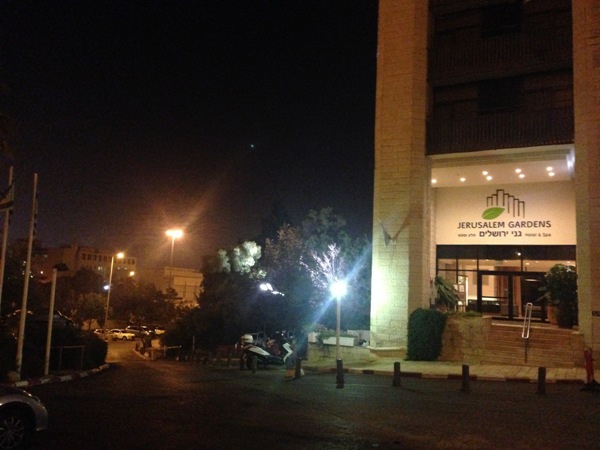
Sermon preached on the 2nd Sunday of Lent 2022 based on Luke 13:31-35, Philippians 3:17-4:1 and Psalm 27
May I speak and may you hear through the Grace of our Lord; Father, Son, and Holy Spirit. Amen
I wonder how many times, like me, you have wept when waking up, sitting to read, or listening to and watching the news recently? We have wept for the people and cities of whom we have hardly heard of a few weeks ago. For Kviv, for Mariupol, for Kharkiv and Sumy. We have wept for the humanitarian crisis unfolding before our very eyes; for the misinformation being spread as a means to retain power; for the destruction of life and liberty.
Even so, we must also weep for the peoples and city of Moscow because as we hear today in our gospel reading Jesus will weep with grief over his beloved city of Jerusalem, but his will also be tears of frustration and notice of intent.
Our reading begins with a warning and open threat of violence against Jesus. The Pharisees, knowledgeable about Jewish law and tradition would have been scrutinising Jesus carefully, ready to challenge his behaviour and teachings, and were openly colluding with the Herodians to destroy Jesus. They were gathering their evidence, whether it was because on the Sabbath, his disciples had gleaned grain or Jesus had healed a man’s withered hand. (Matthew 12 1-14)
Their warning was likely to be a taunt rather than concern for his safety and Jesus was having none of it. Certainly, his description of Herod as ‘that fox’ shows he knows the man’s true character. Herod Antipas, son of Herod the Great, was a crafty, cunning, cruel and deceitful ruler. He cared little for others and greatly about himself. He had already had John the Baptist imprisoned and beheaded, was desperate to see Jesus (Luke 9:9) but he now wants his potential rival dead.
This threat, however, was not going to deflect Jesus from his mission of redemption. Rulers like Herod will not stand the test of time. Jesus still has work to do, and his eyes are fixed firmly on Jerusalem and the way to the cross. He understands his main opposition will be in that city. A city that has rejected and killed God’s prophets time and time again as they have sought to bring his message of peace and reconciliation. For Jesus, Jerusalem has to be the place where his mission comes to its completion. It’s perhaps interesting to note that his phrase, ‘it is impossible for a prophet to be killed away from Jerusalem’ doesn’t mean that there were never any prophets who died elsewhere; rather that it was not acceptable – ouk endechetai that a prophet should die away from that city.
The context of this pronouncement is the failure of Jerusalem and the wickedness of its leaders. Those in authority had strayed far God and were actually hindering his work. Hence, we have this beautiful image of a compassionate Jesus’ desire to protect and shelter the people, like a hen gathers her chicks under her wings, but Jerusalem seeks to prevent even this.
No wonder Jesus’ tears are of frustration. The city’s rejection of protection for the people tells us that they will ultimately reject Jesus himself. However, it is their house that is forsaken and there will be an ultimate reckoning when Jesus returns and delivers the final judgement.
Paul assures us in his letter to the Philippians, that those who reject Jesus and the cross, face destruction for their reliance on earthly things ‘their god is the belly; and their glory is in their shame.’ Surely then all we have to do is to rest on the laurels of our salvation, to stand firm in our faith and to reject the ways of the secular world. Well we could, but I think I’d be trying to wriggle my way out of the judgement line to keep moving to the back of the line to delay coming face to face with Jesus if I chose to do that.
Our faith is a living active thing. However helpless we feel when faced by situations beyond our immediate control, there are still things that we can do to model Jesus and to boldly proclaim the good news of the gospel and bring those who raise up war to justice.
In our Lent course this week we looked at reactive and active justice. Obviously written to highlight the many injustices that are happening in our world and which we shouldn’t forget about. It speaks about our natural response is that of compassion. To do something that will bring immediate relief to a situation. To donate to relief agencies, to look at opening our homes to refugees, to mitigate the false news on social media.
Yet, it has to be more than that. The majority of us live in real comfort and yes, we may have to face deprivations of less travel and higher food prices which might mean we cut out our treats; but it will also mean that we balance our needs against those of our neighbour… We can be active in telling our government and politicians what direction we want to travel. We can sign petitions and write to local MPs to show support for those campaigning for justice
Ruth Valerio, who works for Tearfund, and is a social activist as well as a environmentalist and theologian, gave a really simple way for us to breech the gap in what we can do. Give – Act – Pray. Give what we can, either money or time – Act by getting involved more – and Pray. We should never underestimate the power of prayer.
The war in Ukraine, the totalitarian regimes in Afghanistan, Yemen and North Korea, the bloodshed in Saudi Arabia all these things will pass as history shows us. But we mustn’t let them just pass us by. Jesus was not afraid of Herod and was not afraid of Jerusalem because He was confident that he was doing the will of God
The Lord is my light and my salvation; whom then shall I fear?
The Lord is the strength of my life; of whom then shall I be afraid?
Amen


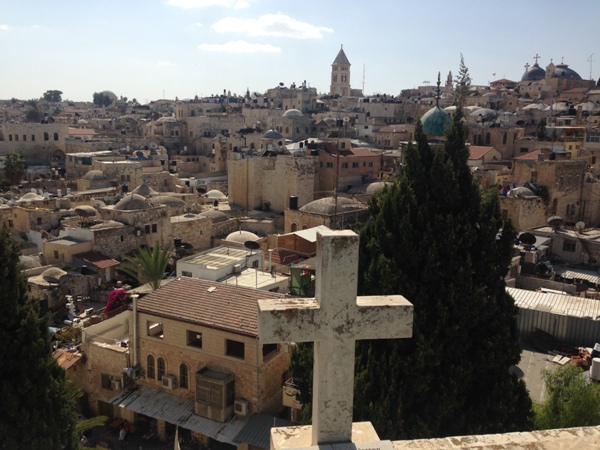
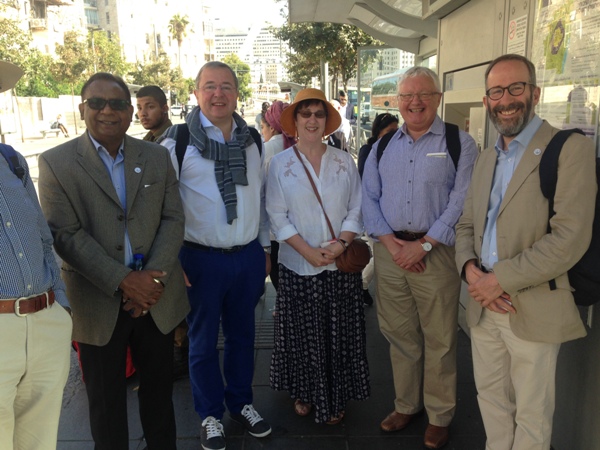





 I have to say that all the time I have been in Jerusalem I have felt completely safe, whether moving through the souks and different quarters or riding on the Light Railways, rubbing shoulders literally with people of
I have to say that all the time I have been in Jerusalem I have felt completely safe, whether moving through the souks and different quarters or riding on the Light Railways, rubbing shoulders literally with people of all faiths and none. You also become used to the presence of armed soldiers on entrances and corners throughout the city However, on the way back to the Damascus gate, we passed the American Consulate in Jerusalem, a heavily fortified entrance which brings back a reminder of the tensions that exist in this region.
all faiths and none. You also become used to the presence of armed soldiers on entrances and corners throughout the city However, on the way back to the Damascus gate, we passed the American Consulate in Jerusalem, a heavily fortified entrance which brings back a reminder of the tensions that exist in this region.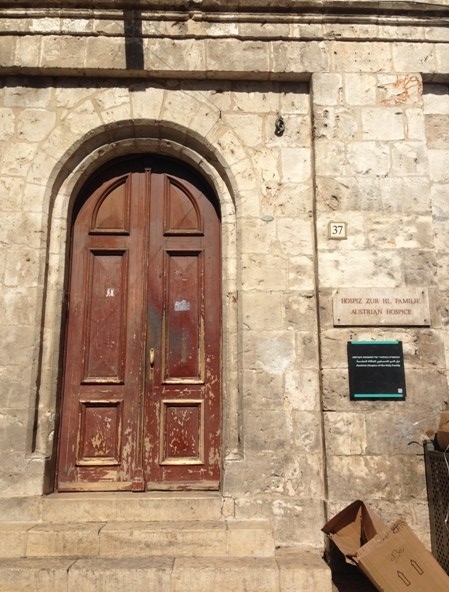













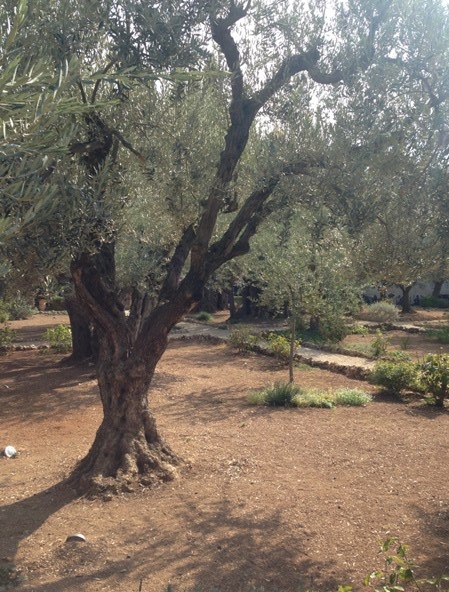




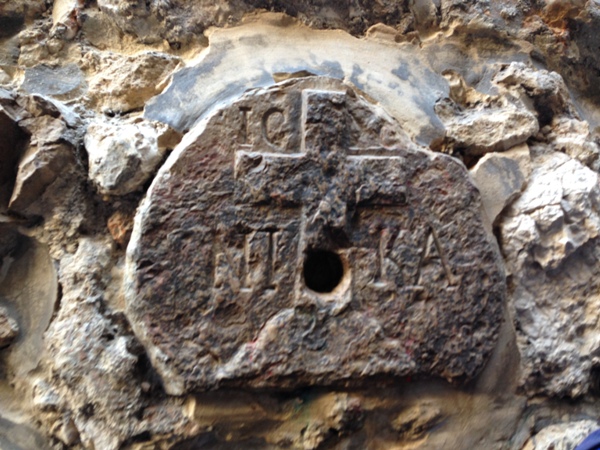
 From there we made our way down and through the Jewish Quarter where we found a remnant of the British Mandate of Palestine from the early 20th century on to a remnant of even greater antiquity, the remains of a wall dating from the reign of King Hezekiah (late eighth century BC). It is called the Broad Wall because it is broad and it is a wall… it is a massive defensive structure, measuring some seven metres wide and was approximately eight metres high. No picture because I am sure you can imagine a broad wall.
From there we made our way down and through the Jewish Quarter where we found a remnant of the British Mandate of Palestine from the early 20th century on to a remnant of even greater antiquity, the remains of a wall dating from the reign of King Hezekiah (late eighth century BC). It is called the Broad Wall because it is broad and it is a wall… it is a massive defensive structure, measuring some seven metres wide and was approximately eight metres high. No picture because I am sure you can imagine a broad wall.



